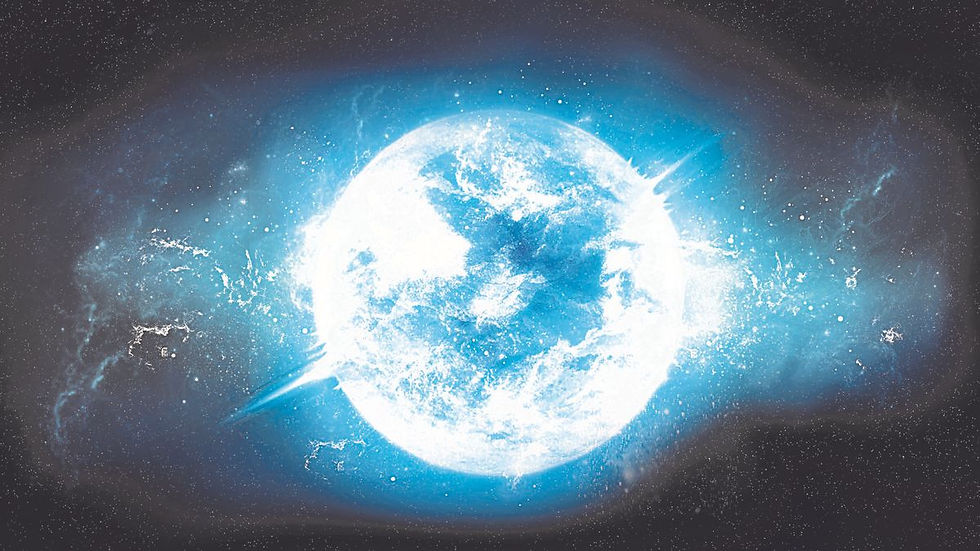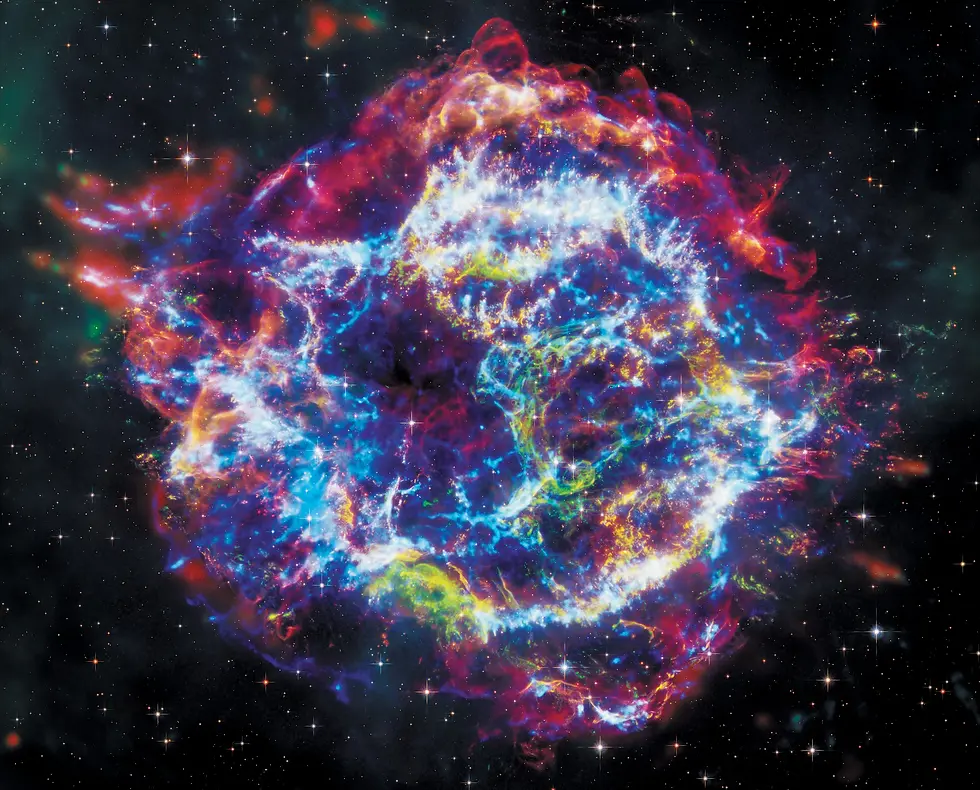The Life Cycle of Stars
- tanisha

- Mar 14
- 3 min read
Stars are the building blocks of the universe. They are born from clouds of gas and dust, shine for millions to billions of years, and eventually die in dramatic ways. During their life, stars create and spread the elements that make up everything around us.

Stage 1: Protostar – A Star is Born
What happens? A star begins as a stellar nebula, a giant cloud of gas and dust (mostly hydrogen). Gravity pulls the material inward, causing it to collapse and heat up.
How long? About 10,000 – 50,000 years.
Key feature: The protostar glows faintly as it heats up, but nuclear fusion hasn’t begun yet.

Stage 2: Main Sequence – The Star’s Prime
What happens? Once the core temperature reaches about 10 million°C, hydrogen atoms fuse into helium, releasing massive energy. This nuclear fusion balances gravity, making the star stable.
How long? Depends on the star's size, ranging from a few million to 10 billion years.
Key feature: Stars spend 90% of their life in this stage—our Sun is a middle-aged main sequence star.
Fun fact! Larger stars burn fuel faster and have shorter lives, while smaller stars like red dwarfs can burn for trillions of years!

Stage 3: Red Giant – A Star Swells
What happens? When hydrogen runs out, the core shrinks while the outer layers expand and cool, turning the star into a red giant. Helium fusion begins, forming heavier elements like carbon and oxygen.
How long? 1 million to 1 billion years.
Key feature: The star becomes 100x larger—in a few billion years, the Sun will expand and engulf Earth!

Stage 4: Helium Flash – A Star’s Final Glow
What happens? In medium-sized stars, helium fusion ignites suddenly in a process called a helium flash, causing a brief burst of energy.
How long? 100,000 to 1 million years. It's a blink compared to the main sequence stage.
Key feature: This flash stabilizes the star temporarily before it moves toward its final stage.

Stage 5: White Dwarf – A Star’s Shrunken Core
What happens? When fusion stops, the star sheds its outer layers, leaving behind a dense, hot core—a white dwarf.
How long? It cools slowly over billions of years.
Key feature: About the size of Earth, but incredibly dense—one teaspoon of white dwarf material weighs tons!
Fun fact! Our Sun will eventually become a white dwarf, surrounded by a glowing shell of gas called a planetary nebula.

Stage 6: Supernova – A Cosmic Explosion
(For stars 8-10 times the mass of the Sun)
What happens? Massive stars die in a supernova, a violent explosion that blasts their outer layers into space while the core collapses.
How long? The explosion itself lasts 1-3 years, but the remnants can shine for thousands of years.
Key feature: Supernovae create and scatter heavy elements like gold and iron—everything in your body was forged in a dying star!

Stage 7: Neutron Star or Black Hole – The Final Fate
Neutron Star:
If the remaining core is 1.4 – 3 times the Sun’s mass, it collapses into a neutron star—an ultra-dense object made almost entirely of neutrons.
Size: Only about 12 km wide, but with more mass than the Sun.

Black Hole:
If the core is over 3 times the Sun’s mass, it collapses into a black hole - a point in space where gravity is so strong, nothing (not even light) can escape.

Why does this life cycle matter?
Element Creation: Stars create the building blocks of life—carbon, oxygen, and other elements.
Cosmic Recycling: When stars die, their materials seed new stars and planets.
Galactic Evolution: Supernovae and stellar winds shape galaxies and spread heavy elements across the cosmos.
Stars are the engines of the universe from their births to deaths, unlocking the secrets of existence.
Every atom in your body—from the calcium in your bones to the iron in your blood—was once formed in a star’s heart.



Comments